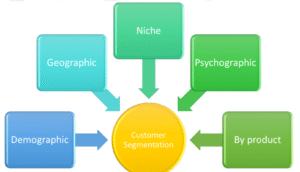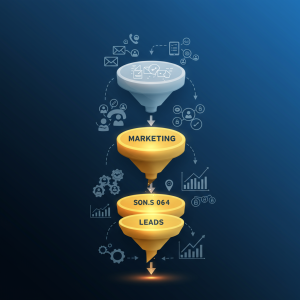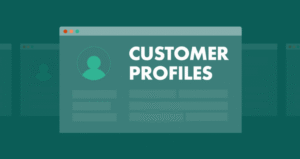Creating Buyer Personas for Better Outbound Targeting

Successful outbound marketing depends on one fundamental truth: the better you understand your ideal customer, the more effectively you can reach them. Yet many businesses approach outbound campaigns with only a vague sense of who they’re targeting, leading to generic messages that fail to resonate and conversion rates that disappoint.
Buyer personas transform this guesswork into strategic precision. These detailed profiles of your ideal customers provide the foundation for crafting messages that speak directly to specific pain points, choosing the right channels for outreach, and timing your communications for maximum impact.
Creating effective buyer personas requires more than demographic data and surface-level assumptions. It demands deep research, careful analysis, and ongoing refinement. When done correctly, buyer personas become powerful tools that guide every aspect of your outbound strategy, from initial prospecting to final conversion.
This guide walks you through the complete process of building buyer personas specifically for outbound marketing success, providing practical frameworks and actionable strategies you can implement immediately.
What Are Buyer Personas and Why They Matter
Buyer personas are semi-fictional representations of your ideal customers, based on real data and research about your existing customers and market. Unlike basic demographic profiles, buyer personas capture the complete picture of who your customers are, what motivates them, and how they make purchasing decisions.
For outbound marketing, buyer personas serve as your North Star. They help you identify which prospects are worth pursuing, craft messages that resonate with specific audiences, and choose the most effective channels for reaching your target market. Without clear buyer personas, outbound efforts often become spray-and-pray campaigns that waste resources and deliver poor results.
Consider the difference between targeting “marketing managers at mid-size companies” versus targeting “Sarah, a 35-year-old marketing manager at a 200-person SaaS company who struggles with attribution reporting and feels pressure to prove ROI on every campaign.” The latter provides actionable insights for crafting compelling outreach messages.
Research Methods for Persona Development
Building accurate buyer personas requires systematic research using multiple data sources. Start with your existing customer base, as these individuals represent your proven market. Conduct one-on-one interviews with your best customers, focusing on their challenges, goals, decision-making processes, and preferences for receiving information.
Customer surveys provide quantitative data to validate insights from interviews. Ask about demographics, job responsibilities, pain points, preferred communication channels, and factors that influence purchasing decisions. Keep surveys concise to maximize response rates, typically 10-15 questions maximum.
Sales team insights prove invaluable for understanding buyer behavior. Your sales representatives interact with prospects daily and can identify common objections, frequently asked questions, and characteristics of qualified leads versus poor fits. Schedule regular feedback sessions to capture this frontline intelligence.
Website analytics reveal how different audience segments discover and engage with your content. Use tools like Google Analytics to identify traffic sources, popular content topics, and user journey patterns. Heat mapping software shows where visitors focus their attention, providing insights into information priorities.
Social media listening helps you understand how your target audience discusses industry challenges and solutions. Monitor relevant hashtags, industry groups, and competitor mentions to identify pain points and language patterns your personas use.
Essential Components of Effective Buyer Personas
Demographic information provides the foundation but shouldn’t dominate your personas. Include age range, job title, company size, industry, and location, but focus more heavily on psychographic and behavioral data that directly impact purchasing decisions.
Goals and challenges form the core of actionable buyer personas. Identify what your persona wants to achieve professionally and personally, then map the obstacles preventing them from reaching these goals. Be specific about both primary objectives and secondary concerns that influence decision-making.
Pain points require detailed exploration beyond surface-level problems. If your persona struggles with “lack of time,” dig deeper to understand what specific tasks consume their time, why current solutions fall short, and how these challenges impact their broader responsibilities.
Decision-making criteria reveal how your persona evaluates solutions. What factors matter most when comparing options? Who else influences the decision? What’s the typical timeline from initial interest to purchase? Understanding these elements helps you anticipate objections and position your solution effectively.
Preferred communication channels and information consumption habits guide your outbound strategy. Does your persona prefer email, LinkedIn messages, or phone calls? Do they read industry publications, follow thought leaders on social media, or attend conferences? This information determines where and how to reach them.
Segmenting Your Audience for Targeted Outreach
Most businesses need multiple buyer personas to represent different customer segments. Start by analyzing your customer base to identify distinct groups based on company size, industry, job function, or use case. Each segment likely has unique motivations and preferences that warrant separate personas.
Primary personas represent your most valuable customer segments—those who generate the highest revenue, have the shortest sales cycles, or demonstrate the strongest product-market fit. These personas should receive the most detailed development and the majority of your outbound focus.
Secondary personas include smaller but still important customer segments. While these may not justify extensive outbound campaigns, understanding their characteristics helps you recognize opportunities and craft appropriate messages when they arise.
Negative personas identify characteristics of prospects who are unlikely to become good customers. These might include companies that are too small to afford your solution, industries with regulatory restrictions, or job titles that lack decision-making authority. Negative personas help you avoid wasting resources on unqualified prospects.
Building Detailed Persona Profiles

Transform your research into comprehensive persona profiles that your entire team can use. Give each persona a name and photo to make them feel real and memorable. Include a brief narrative that summarizes their background, current situation, and primary challenges.
Create a day-in-the-life scenario that shows how your persona spends their time, what tasks they prioritize, and where your solution fits into their workflow. This narrative helps your team understand context beyond just demographic data.
Include direct quotes from your research to capture your persona’s voice and language. These quotes provide authentic phrases and terminology to use in your outbound messages, helping you speak their language rather than using generic business jargon.
Map out the buyer’s journey for each persona, identifying how they typically discover solutions, what information they seek at each stage, and what factors drive them to make a purchase decision. This journey mapping guides your outbound sequence and content strategy.
Using Personas to Improve Outbound Campaigns
Personas should directly influence every aspect of your outbound strategy. Use persona pain points to craft subject lines that immediately capture attention. Instead of generic messages about your product features, focus on specific problems your persona faces and how your solution addresses them.
Customize your outreach channels based on persona preferences. If your primary persona actively uses LinkedIn but rarely checks email, prioritize LinkedIn outreach over email campaigns. If they prefer phone calls for important business discussions, incorporate calling into your sequence.
Timing becomes more strategic when you understand your persona’s schedule and priorities. A busy CEO might be more responsive to early morning messages, while a hands-on manager might prefer outreach during mid-morning or late afternoon when they’re planning their next day.
Message personalization goes beyond inserting a name into a template. Reference specific challenges your persona faces, use their preferred terminology, and position your solution in the context of their broader goals. This level of personalization significantly improves response rates.
Testing and Refining Your Buyer Personas
Buyer personas require ongoing refinement as markets evolve and your understanding deepens. Regularly review campaign performance data to identify patterns in responses, conversions, and customer feedback. Strong response rates from certain persona segments might indicate accurate targeting, while poor performance suggests the need for persona adjustments.
A/B testing different messages for the same persona helps validate assumptions about their motivations and preferences. Test variations in tone, value propositions, and call-to-action approaches to identify what resonates most effectively.
Quarterly persona reviews ensure your profiles remain current and accurate. Schedule regular feedback sessions with sales and customer success teams to gather insights from recent interactions. Customer behavior and preferences can shift due to market changes, economic conditions, or industry trends.
Track key metrics for each persona, including response rates, conversion rates, and deal velocity. This data helps you identify which personas represent your best opportunities and deserve increased outbound focus.
Tools and Templates for Persona Creation
Several tools can streamline the persona creation process. HubSpot offers free persona templates that guide you through essential questions and provide professional formatting. Xtensio provides collaborative persona templates that teams can work on together.
For research gathering, tools like Typeform create engaging surveys that increase response rates. Calendly helps schedule customer interviews, while Zoom or similar platforms enable remote interviews with geographically dispersed customers.
Customer relationship management (CRM) systems like Salesforce or HubSpot store persona data alongside prospect information, enabling personalized outreach at scale. Marketing automation platforms can segment campaigns based on persona characteristics and deliver targeted messages.
Analytics tools provide quantitative data to support persona development. Google Analytics reveals website behavior patterns, while social media analytics show engagement preferences and content consumption habits.
Measuring the Impact of Persona-Driven Outbound
Success metrics for persona-driven outbound campaigns should focus on quality over quantity. Response rates typically improve when messages align with persona pain points and preferences. Track open rates, reply rates, and meeting acceptance rates for each persona segment.
Conversion metrics reveal how effectively your personas guide prospects through the sales funnel. Monitor the percentage of outbound leads that become qualified opportunities and ultimately convert to customers. Higher conversion rates indicate accurate persona targeting and messaging.
Sales cycle length often decreases when outbound efforts target well-defined personas. Prospects who match your ideal customer profile typically require less education and move through the sales process more quickly.
Customer lifetime value provides long-term validation of persona effectiveness. Customers acquired through persona-driven outbound campaigns should demonstrate higher retention rates and greater expansion potential if your personas accurately identify ideal customers.
Making Buyer Personas Your Competitive Advantage
Creating detailed buyer personas transforms outbound marketing from a numbers game into a strategic advantage. When you truly understand your ideal customers’ motivations, challenges, and preferences, you can craft messages that cut through the noise and generate meaningful conversations.
The businesses that succeed with outbound marketing invest time in understanding their customers before launching campaigns. They recognize that effective outreach requires empathy, research, and ongoing refinement rather than generic templates and mass emails.
Start building your buyer personas today by interviewing your three best customers. Ask about their biggest challenges, decision-making processes, and preferred communication styles. Use these insights to refine your next outbound campaign and measure the impact on response rates and conversions.
Remember that buyer personas are living documents that evolve with your market and customers. Regular updates and refinements ensure your outbound efforts remain relevant and effective as your business grows and markets change.





